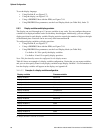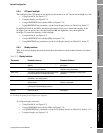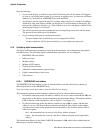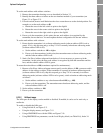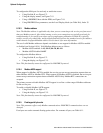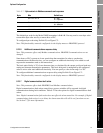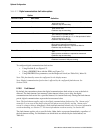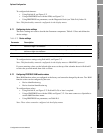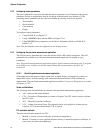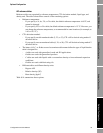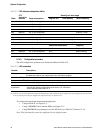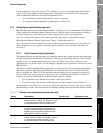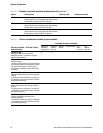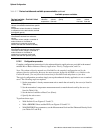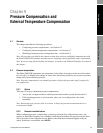74 Micro Motion
®
Model 2400S Transmitters for PROFIBUS-DP
Optional Configuration
8.13 Configuring sensor parameters
The sensor parameters are used to describe the sensor component of your flowmeter. One sensor
parameter (curved or straight tube) must be set during characterization (see Section 6.2). The
remaining sensor parameters are not used in transmitter processing, and are not required:
• Serial number
• Sensor material
• Liner material
•Flange
To configure sensor parameters:
• Using ProLink II, see Figure C-2.
• Using a PROFIBUS host with the EDD, see Figure C-10.
• Using PROFIBUS bus parameters, use the Device Information block (see Table D-5),
Indices 7–12.
Note: This functionality cannot be configured via the display menus.
8.14 Configuring the petroleum measurement application
The API parameters determine the values that will be used in API-related calculations. The API
parameters are available only if the petroleum measurement application is enabled on your
transmitter.
Note: The petroleum measurement application requires liquid volume measurement units. If you plan
to use API process variables, ensure that liquid volume flow measurement is specified. See
Section 8.2.
8.14.1 About the petroleum measurement application
Some applications that measure liquid volume flow or liquid density are particularly sensitive to
temperature factors, and must comply with American Petroleum Institute (API) standards for
measurement. The petroleum measurement application enables Correction of Temperature on volume
of Liquids, or CTL.
Terms and definitions
The following terms and definitions are relevant to the petroleum measurement application:
• API – American Petroleum Institute
• CTL – Correction of Temperature on volume of Liquids. The CTL value is used to calculate
the VCF value
• TEC – Thermal Expansion Coefficient
• VCF – Volume Correction Factor. The correction factor to be applied to volume process
variables. VCF can be calculated after CTL is derived
CTL derivation methods
There are two derivation methods for CTL:
• Method 1 is based on observed density and observed temperature.
• Method 2 is based on a user-supplied reference density (or thermal expansion coefficient, in
some cases) and observed temperature.



